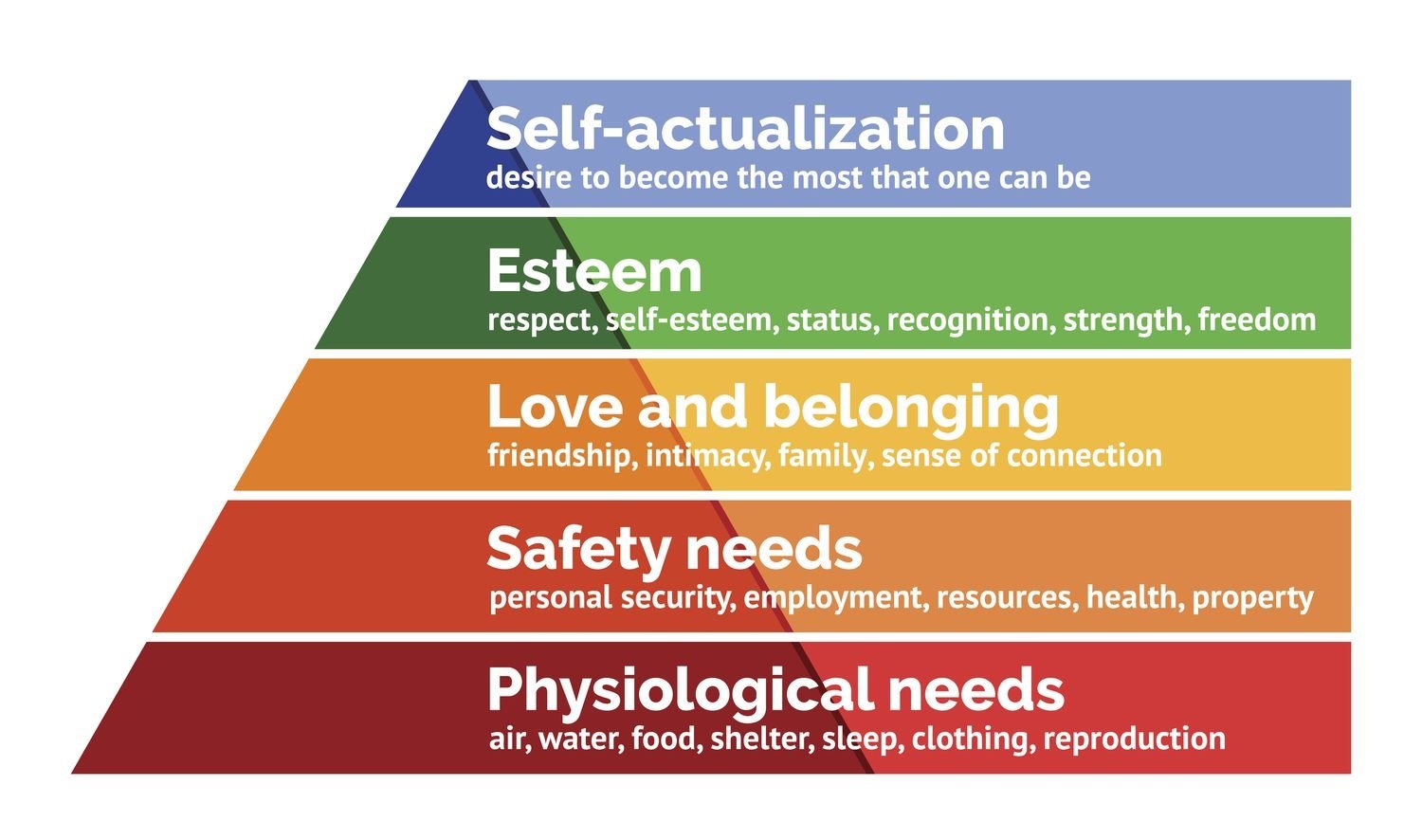Safety
Hi friends! Lately I’ve been wondering a lot about what it means to feel safe and what happens when we experience moments of feeling unsafe. It may seem like a simple, insignificant thought, but I believe it has the ability to open us up to deeper learning and understanding. Let’s dive in.
Plateresca / Getty Images
Maslow’s Hierarchy of Needs is theory and model created by Abraham Maslow which places human motivation into 5 categories: physiological, safety, love, esteem, and self-actualization. Like climbing a flight of stairs, each of these steps (or categories) build on one another, leading to self-actualization.
What I find interesting about this model is where safety is placed, just above physiological needs like air, water, shelter etc. Once we’ve achieved what we need to physically sustain ourselves, there must be a prevailing feeling of safety that enables us to experience love and belonging, esteem, and self-actualization.
The simple question of “what about this feels unsafe” has the potential to create deeper understanding of fear and opens pathways to speaking authentically to our experiences.
________________
The experience I am about to describe is rooted in a therapeutic technique referred to as persona work and/or internal family systems. See the footnotes for resources or reach out if you want to learn more.
When I made the choice to start doing these articles, it took me a while to go for it. I knew what I wanted to do, how I wanted to share them and already had several of these written, but I still had resistance. When I tuned into the feeling of what felt unsafe, I became aware of a younger version of myself (a persona) who cares very much about what others think, specifically around creative expression.
I began to inquire about this version of myself whose very real feelings were affecting my experience. I won’t get into the details, but I’ve had times in my life where my creative expression didn’t feel as welcome as it is today. This little guy feels unsafe because if people don’t like what or how he creates, maybe that means he will get ridiculed, or even worse, be less loved. Now, we are talking about someone who is probably 10 or so years old, so his ability to process emotions is much less advanced than mine, but nevertheless, everyone’s experience is valid — even if it’s a younger version of myself, living in the memory of my mind and body.
Through practices I’ve studied, I knew to handle this kiddo with care. I let him know that I hear what he is telling me, I am going to take care of him, and that both he and I are safe. After that conversation with myself, I released the feelings of fear, did some breathing, and prepared the first Big Ideas email to be sent.
________________
“Authenticity is a collection of choices that we have to make every day. It's about the choice to show up and be real. The choice to be honest. The choice to let our true selves be seen.”
— Brene Brown, The Gifts of Imperfection
When conflict arises or we sense that someone is not aligned with their experience, this question can get to the root of feeling and behavior, creating deeper connections between those involved.
Rather than asking someone “what’s wrong” or “how do you feel about this,” ask, “Does something about this feel unsafe? If so, I’d like to hear about it.” The questions goes much deeper and the answer they provide will come from the source of fear rather than a persona dancing along the surface.
Before asking this question though, be sure to make yourself available for the response. If you are seeking authentic expression and understanding of someone’s fear, be a gracious host. Welcome their vulnerability and honor their experience.
________________
When it comes to our own experiences, this is a great tool for personal discovery. It has helped me identify the fear that is generating my psychological (mind) as well as my physiological (body) response to things that create unease.
In my experience, it is only through understanding the root of fear that we can truly resolve and move beyond the conflict it creates… amongst others or within ourselves.
For more information on persona work, check out this article and video from The Hendricks Institute. To learn more about Internal Family Systems, I highly recommend No Bad Parts by Richard C. Schwartz, PhD.
Thanks for reading!
If this post resonates with you, I would so appreciate your sharing it with friends, loved ones, and colleagues.

